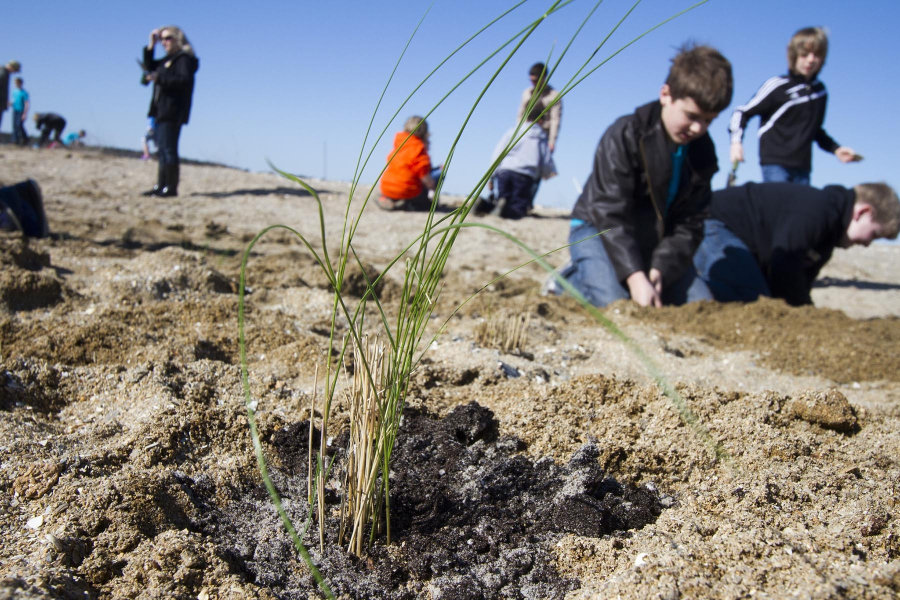Elizabeth River Project shows the power of local action
Many might find the prospect of restoring the Elizabeth River a daunting task, but one local group is working to do just that

“Never doubt that a small group of thoughtful, committed, citizens can change the world. Indeed, it is the only thing that ever has.” - Margaret Mead
This quote is often used to characterize the efforts of individuals working for small organizations who get great things done. As I’ve traveled throughout the watershed over the past four years, I’ve repeatedly witnessed the remarkable work of these local organizations. Just recently, I attended a kick-off event for the fourth revision of the Elizabeth River Project’s Watershed Action Plan. More than 70 people attended, representing the major stakeholder groups in the Elizabeth River watershed: community representatives; local, state and federal government officials; business leaders; teachers and university faculty; and members of environmental organizations—a true collaboration.
The Elizabeth River flows between the cities of Norfolk, Portsmouth and Chesapeake as it makes it way to the Chesapeake Bay. Once one of the most heavily polluted water bodies in the region, the area has faced significant environmental challenges. Money Point, along the Southern Branch of the river, was once a 35-acre “dead zone” contaminated by creosote, a chemical used as wood preservative. Most would find the thought of taking on these environmental challenges more than a little daunting. But in 1991, four local citizens outlined a vision for creating an organization to do just that, establishing the Elizabeth River Project just two years later.
The Elizabeth River Project released its first Watershed Action Plan in 1996, updating it every six years. The 2008 Plan established a set of guiding principles: build strong partnerships through collaboration, incorporate environmental education into every action, plan proactively to reduce impacts from sea level rise, monitor progress using indicators tracked against a baseline and promote environmental justice for all stakeholders. With each revision to the Watershed Action Plan, the goals have grown to be quite ambitious. In their current work on a fourth update to the Plan, the group’s determination only continues to grow.
In 2014, the Elizabeth River Project issued a State of the River report assessing the health of each of the five major branches. By any measure, the success of the past 20 years in meeting the ambitious goals they set for themselves is, in a word, incredible. On the notorious Southern Branch, including Money Point, more than 36 million pounds of contaminated sediment have already been removed, with further improvements underway. The number of fish species observed in the area has increased from four to 26, and the rate of cancerous and pre-cancerous lesions in the mummichog, an indicator species, has dropped from above 40 percent to almost background levels.
Several programs run by the Elizabeth River Project work to increase awareness among various segments of society and to reward citizens who take positive steps to improve their environment. Their River Star Program highlights homes, schools and businesses that take simple steps to protect the Elizabeth River. With the help of donors and other supporters, they developed the Learning Barge, a solar- and wind-powered barge equipped with living wetlands, an enclosed classroom, composting toilets and a rainwater filtration system. More than 50,000 people—including 20,000 K-12 students—have been educated on the barge, which is moved from location to location by tug operators that volunteer their time and equipment. Restoration work by the Elizabeth River Project and its partners led to the opening of Paradise Creek Nature Park—40 acres of land along Paradise Creek, a tributary of the Southern Branch—in 2013.
While the Elizabeth River Project and its partners have accomplished amazing things in a relatively short period of time, they continue to look ahead at the work still left to do. On March 23, they held a kick-off meeting to once again revise and update their Watershed Action Plan—the first of four meetings that will culminate with a plan that guides the collaborative efforts of the organization and its partners for the next six years. Just as I have no doubt they will set their aim high when establishing their goals for the years to come, I also have no doubt they will achieve those goals in large measure. The Elizabeth River Project and its partners have never been intimidated by the magnitude or complexity of the challenge. It’s their river, and they are reclaiming it. They serve as an inspiration to all of us.
Note: The opinions expressed above are those of the author and do not necessarily reflect U.S. EPA policy endorsement or action.

Comments
There are no comments.
Thank you!
Your comment has been received. Before it can be published, the comment will be reviewed by our team to ensure it adheres with our rules of engagement.
Back to recent stories